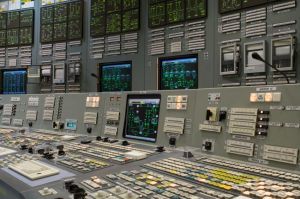Solid State Storage Total Cost of Ownership versus a Really Low Price Today
 For electronic system designers attempting to quantify a budget for their flash storage requirements, looking at total cost of ownership for the life of the program provides a needed sanity check. A really low price for a flash card generally signifies there is a limited amount of emphasis put into areas which increase the longevity and reliability of the solid state device.The hidden expenses associated with low cost flash products are generally not realized until the products are qualified and ship in an OEM’s system in the field. This causes more costly issues to resolve as well as damaged reputations in the eyes of an OEM’s customers.
For electronic system designers attempting to quantify a budget for their flash storage requirements, looking at total cost of ownership for the life of the program provides a needed sanity check. A really low price for a flash card generally signifies there is a limited amount of emphasis put into areas which increase the longevity and reliability of the solid state device.The hidden expenses associated with low cost flash products are generally not realized until the products are qualified and ship in an OEM’s system in the field. This causes more costly issues to resolve as well as damaged reputations in the eyes of an OEM’s customers.
Four areas that should be considered are:
- Cost of Qualification and BOM Control
- Cost of Failure
- Cost of Obsolescence
- Cost of Corrupted or Lost Data
Cost of Qualification and BOM Control
An often overlooked area is the cost of qualifying new components for an OEM’s system. For example, if a program’s life is 5 years and the internal components of the storage device changes yearly or more, at least five qualifications would need to be funded to ensure the product meets the system’s needs.
Many claims of identical form, fit and function problematic since the trace width of the NAND components shrinks and the reliability challenges increase as well. In some instances, vendors change SLC NAND components to MLC NAND to lower market prices while increasing their profits. For a good understanding of the challenges, see our white paper: SLC vs MLC NAND and The Impact of Technology Scaling.
Some applications only require precursory testing for qualification. Others require several months of testing, possibly regression testing for all software combinations and extreme environmental and electrical qualification. Costs can range from a few hundred dollars to the hundreds of thousands.
Cost of Field Failures
 A product failure in the field is a major issue on a number of levels. There is the hit to your reputation in the eyes of the customer and market. The cost of repair or replacement for the failed system and the associated costs of customer service, field service calls and in some cases penalties associated with contract terms.Many product failure issues can be eliminated or significantly reduced at the design and vendor selection stage by choosing the correct solid state storage device and vendor which is capable of meeting the systems long term requirements.
A product failure in the field is a major issue on a number of levels. There is the hit to your reputation in the eyes of the customer and market. The cost of repair or replacement for the failed system and the associated costs of customer service, field service calls and in some cases penalties associated with contract terms.Many product failure issues can be eliminated or significantly reduced at the design and vendor selection stage by choosing the correct solid state storage device and vendor which is capable of meeting the systems long term requirements.
An Industrial Grade versus Industrial MLC decision which more than satisfies your OEM system needs upfront will surely cost more money on the front end. But, with the significant costs to recover from a failure, it may be the wisest choice.
Cost of Obsolescence
Unlike Industrial Grade flash Storage devices, Consumer and Industrial MLC parts typically have a few weeks up to 18 months of life depending on the storage vendor. This creates a need for requalification of a follow on part from the same vendor or another vendor’s product.
When a transition is well understood and scheduled there is plenty of time to perform this additional qualification to ensure satisfactory results. When a change is unexpected, there may not be sufficient time to perform the needed testing. A risk assessment to build with an unproven solution or to stop production until a solution is found must be made.
For these unexpected obsolescence issues, in some cases material still exists in the broker or other channels. For a considerably higher price this may be purchased, but introduces the possibility of counterfeit parts as well.
Cost of Corrupted or Lost Data
 Similar to a catastrophic failure, corrupted or lost data may be even worse. A customer may be relying on data collected by the OEM system. When that data has been corrupted it is of little value.Damaged reputation and doubt in mind of customer are the result. For mission critical applications, it can cause fatal errors with unknown consequences.
Similar to a catastrophic failure, corrupted or lost data may be even worse. A customer may be relying on data collected by the OEM system. When that data has been corrupted it is of little value.Damaged reputation and doubt in mind of customer are the result. For mission critical applications, it can cause fatal errors with unknown consequences.
Conclusion
Qualifying the right solid state storage product and vendor in the design stage can eliminate future storage related OEM system issues in the field. It is advisable to understand the needed specifications of your application and the longevity of a vendor’s product when making your decision.
Cactus Industrial Grade flash products, based on SLC NAND, offer the longest life cycle for flash storage in the market. These Industrial Grade (SLC) Products also offer the Highest Reliability as well.
Cactus Industrial MLC flash products, based on MLC NAND, for OEM designs not requiring as high of reliability or qualification as Industrial Grade are a lower cost alternative. There is typically transition required every 12-18 months to a replacement part.
Consumer Grade (TLC) products should not be used in OEM applications where data reliability is paramount. Their proper place is in the vast number of consumer devices such as mobile phones, digital cameras, etc.






